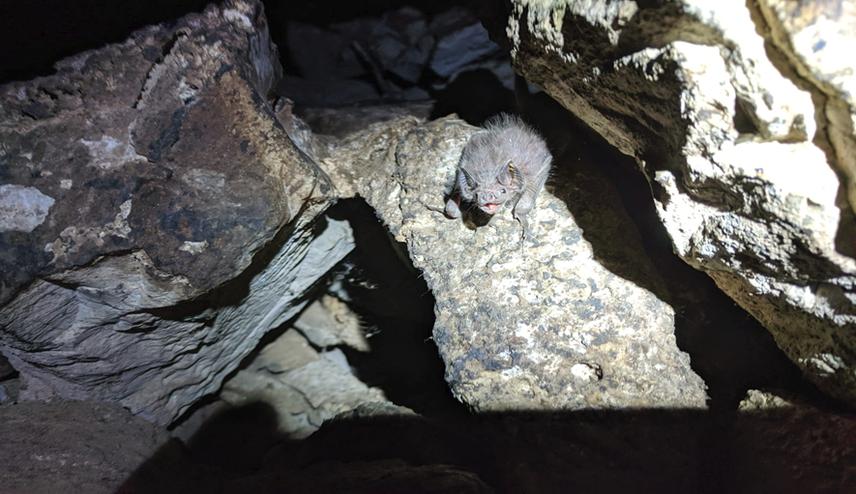Lilianna K Wolf
White-nose syndrome (WNS) is an introduced virulent fungal disease that has widely spread and decimated bat populations since was first documented in North America in 2006. Recent observations of the fungus on Mexican free-tailed bats are particularly alarming, as this species has a broad migratory range and the potential to spread this deadly disease through Central and South America. Central and South America support the most species-rich hotspot for bat biodiversity in the world. My research aims to understand the threat that WNS poses to bats in Mexican karst regions. My project will help researchers understand the level of threat that WNS poses to particular areas, and structure their survey and conservation plans appropriately.

A vampire bat perched on a rock in a cave in Tamaulipas.
White-nose syndrome is a virulent fungal disease that has decimated North American bat populations since it was first documented in 2006. Currently, the range of the fungus that causes the disease, Pseudogymnoascus destructans (Pd), is expanding. The fungus has now been detected in 21 counties in Texas. Most concerningly, 18 Tadarida brasiliensis bats have tested positive for the fungus. These bats have a broad migratory range, from as far north as Kansas in the United States to as far south as Bolivia. Ostensibly, these bats could be highly dispersive vectors for Pd, introducing them to caves in Mexico, and further south. Central and South America are home to the most species-rich hotspot regions for bat biodiversity in the world. My project seeks to evaluate the potential threat that WNS poses to areas in Mexico, and whether it is possible for caves in Mexico to act as a nexus of dispersal for the fungus - potentially allowing it to travel through the country and reach Central and South America.
The measurement that best predicts suitability for fungal growth of Pd within a cave is temperature. Throughout the course of my project, I will deploy and collect microclimate measuring data loggers within caves across cave regions in six states in Mexico: Nuevo Leon, Tamaulipas, Coahuila, Morelos, Ciudad de Mexico, and Guerrero. The collected data from this effort will be consolidated and fit to a model examining the relationship of internal cave temperature with external factors such as external mean temperature, precipitation, elevation, and geology. This model will be used to describe fungal suitability of karst regions on a landscape scale. With such a deadly and quickly moving epidemic, it is crucial for researchers to be aware of the danger that WNS poses to their region so that they can be prepared and put an effective amount of effort into surveys before WNS reaches them. The product of this research will allow researchers to target areas on a landscape most likely to sustain the microclimate which supports the fungus. This way, researchers and managers will be able to allocate their resources to most effectively monitor their region for the arrival of the fungus.